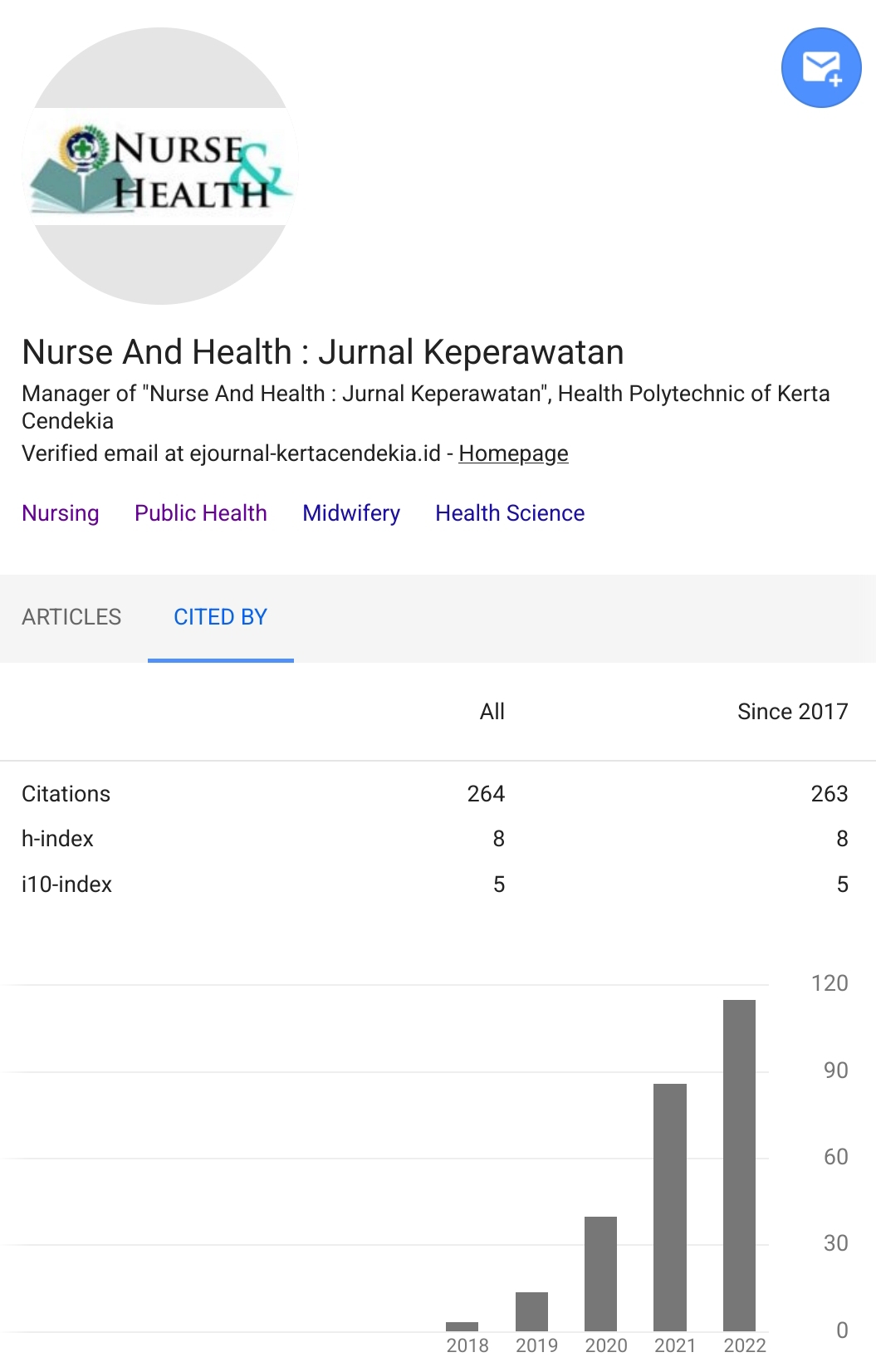EXPOSURE OF INFORMATION, FAMILY KNOWLEDGE OF DENGUE HEMORRHAGIC FEVER, AND BEHAVIORS IN IMPLEMENTING ERADICATION OF MOSQUITO NESTS IN SIDOARJO
Abstract
Dengue Hemorrhagic Fever is an infectious disease caused by one of four dengue viruses that is transmitted by mosquitoes, especially aedes aegypti and aedes albopyctus. The occurrence of outbreaks in Indonesia caused by various factors, including an environment that is still conducive to the breeding of Aedes mosquitoes, expansion of endemic areas due to the emergence of new residential areas, minimal eradication of mosquito nests, and increased population mobilization.This correlational study uses cross sectional method where the data collection is by distributing questionnaire. The number of samples in this study were three hundred (300) respondents who were drawn using stratified random sampling technique. After the data is collected then tabulated and processed using the Spearman Rho Test with p ≤ 0.05.The statistical test results of the relationship between the level of knowledge and behavior in mosquito nests eradication using the Spearmen rho test showed that p-value = 0.882> α so that it was concluded that there was no relationship between them. While the statistical test results of the relationship between information exposure and behavior mosquito nests eradication using the Spearmen rho test found that there was no relationship between the two variables p value = 0.229> α so it was concluded that there was no relationship between them.The community must be active in seeking information about dengue hemorrhagic fever and increase their participation in eradicating mosquito nests on an ongoing basis both at home and in the surrounding environment. Keywords: Information, Knowledge, DHF, PSN BehaviorDownloads
References
Damanik, Carolin. 2019. Kasus DBD di Indonesia. https://regional.kompas.com/read/2019/01/31/14365721/13683-kasus-dbd-di-indonesia-dalam-sebulan-133-orang-meninggal-dunia. 2019
Kemenkes RI. 2016. Kendalikan DBD dengan PSN 3M Plus. http://www.depkes.go.id/article/view/16020900002/kendalikan-dbd-dengan-psn-3m-plus.html
Kemenkes RI. 2016. Situasi Demam Berdarah Dengue di Indonesia. http://www.depkes.go.id/article/view/16121400002/kemenkes-keluarkan-surat-edaran-pemberantasan-sarang-nyamuk-dengan-3m-plus-dan-gerakan-1-rumah-1-jum.html 2016
Kholid, Ahmad. 2015. Promosi Kesehatan : dengan Pendekatan Teori Perilaku, Media, dan Aplikasinya untuk MAhasiswa dan Praktisi Kesehatan. Jakarta : Rajawali Pers
Mubarak, W.I. 2007. Promosi Kesehatan Sebuah Pengantar Proses Belajar Mengajar dalam Pendidikan. Graha Ilmu: Yogyakarta.
Notoatmodjo, Soekidjo. 2003. Pendidikan dan Perilaku Kesehatan. Jakarta : Rineka Cipta
Nurarif, Amin Huda dan Kusuma, Hardhi. 2015. Aplikasi Asuhan Keperawatan berdasarkan Diagnosa Medis dan NANDA. Jilid 1. Jogjakarta : Mediaction
Safitri, Marista Adelia. 2019. Ciri Nyamuk Demam Berdarah.
https://hellosehat.com/pusat-kesehatan/demam-berdarah-dengue-dbd/ciri-nyamuk-demam-berdarah/
Shuaib, Faisal et all. 2010. Knowledge, attitude, and practices regarding dengue Infection in Westmoreland Jamaica. https://www.ncbi.nlm.nih.gov/pmc/articles/PMC2996104/
Sukardi. 2012. Metodologi Penelitian Pendidikan Kompetensi dan Prakteknya. Jakarta : Bumi Aksara.
Turangan, Lily. 2016. Siklus Hidup Nyamuk Aedes Aegypti. https://lifestyle.kompas.com/read/2016/02/04/155700723/Begini.Siklus.Hidup.Nyamuk.Aedes.Aegypti.Penyebar.DBD
Authors who publish with Nurse and Health: Jurnal Keperawatan agree to the following terms:
- Authors retain copyright licensed under a Creative Commons Attribution-NonCommercial 4.0 (CC BY-NC 4.0), which allows others to remix, tweak, and build upon the authors' work non-commercially, and although the others' new works must also acknowledge the authors and be non-commercial, they don't have to license their derivative works on the same terms.
- Authors are permitted and encouraged to post their work online (e.g., in institutional repositories or on their website) prior to and during the submission process, as it can lead to productive exchanges, as well as earlier and greater citation of published work (See The Effect of Open Access). Authors can archive pre-print and post-print or publisher's version/PDF.























